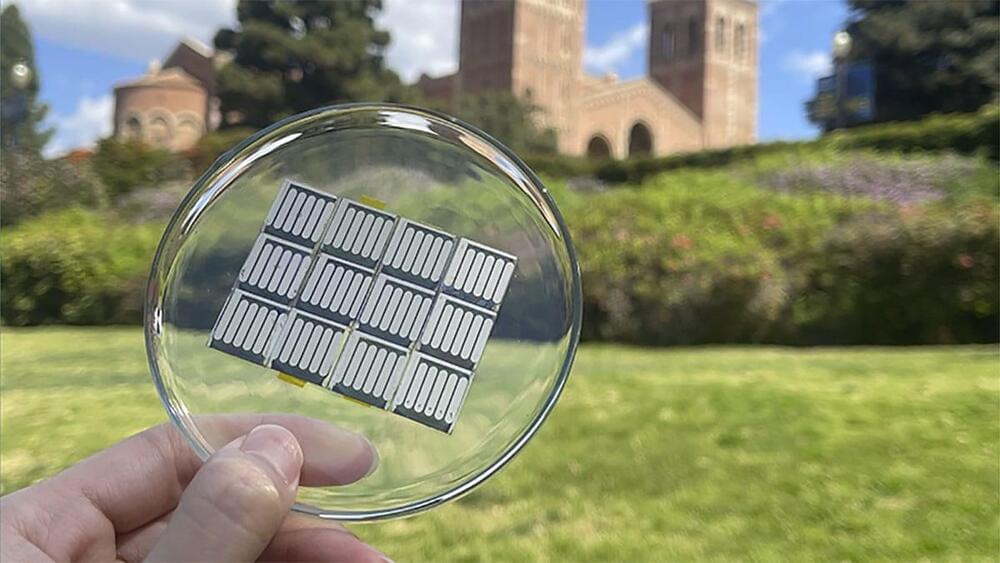The upward spiral of artificial intelligence looks set to produce machines which are cleverer and more powerful than any humans. What happens when machines can themselves create super-intelligent machines? ‘The Singularity’ is the name science fiction writers gave to this situation. Philosopher David Chalmers discusses the philosophical implications of this very real possibility with Nigel Warburton in this episode of the Philosophy Bites podcast.
Get the latest international news and world events from around the world.
Fastest Artificial Intelligence Ever Made (µ-Parametrization)
A new Artificial Intelligence from Microsoft and OpenAI utilizes advanced µ-Parametrization in order to increase performance and allow huge AI models to be trained much more easily. This means that we can soon expect AI models which beat any old ones and even humans at trillions of parameters in the future. The future of machine learning sure looks interesting.
–
TIMESTAMPS:
00:00 The AI Bottleneck.
00:38 SKILLSHARE: MAKE YOUR OWN AI
02:28 How AI was made much faster.
04:37 A new Revolutionary Artificial Intelligence.
07:18 Hardcoding Machine Intelligence.
09:17 Last Words.
–
#ai #deepmind #google

Technology in agriculture is reaching new heights
BOW ISLAND, AB — Patrick Fabian is quickly picking up a new skill. The seed farmer plans to start using drones…
BOW ISLAND, AB – Patrick Fabian is quickly picking up a new skill.
The seed farmer plans to start using drones to monitor his 1,250 irrigated acres.
“On our farm, it will be mostly for crop surveillance to check the middle of the fields and the things we can’t normally see properly without walking every single square foot of the farm,” Fabian said.



Billionaire Space Tourism Has Become Insufferable
Last summer, at a time when the pandemic had strained many people’s finances, inflation was rising and unemployment was still high, the sight of the richest man in the world joyriding in space hit a nerve. On July 20 Amazon founder Jeff Bezos rode to the edge of space onboard a rocket built by his company Blue Origin. A few weeks earlier ProPublica had revealed that he did not pay any income taxes for two years, and in other years he paid a tax rate of just 0.98 percent. To many watching, it rang hollow when Bezos thanked Amazon’s workers, whose low-paid labor had enriched him enough to start his own rocket company, even though Amazon had quashed workers’ efforts to unionize several months before. The fact that another billionaire, Richard Branson, had also launched himself onboard his own company’s rocket just a week earlier did not help.
COVID changed many people’s willingness to shrug off the excesses of the rich. The pandemic drew an impossible-to-ignore distinction between those who can literally escape our world and the rest of us stuck on the ground confronting the ills of Earth: racism, climate change, global diseases. Even several members of Congress expressed their disapproval of Bezos. “Space travel isn’t a tax-free holiday for the wealthy,” said Representative Earl Blumenauer of Oregon. Bezos and Branson putting the spotlight on themselves as passengers served to downplay the work that hundreds of scientists and engineers at Blue Origin and Virgin Galactic had put into designing, building and testing their spacecraft. It also masked the reality that advances in private spaceflight really could eventually pay off in greater access to space for all and more opportunities for scientific research that could benefit everyone. All their flights did was give the impression that space—historically seen as a brave pursuit for the good of all humankind—has just become another playground for the 0.0000001 percent.

BIG designs virtual office in the metaverse for Vice
Danish architecture studio BIG has designed its first building in the metaverse, a virtual office for employees at media company Vice Media Group called Viceverse.
The recently opened Viceverse office is located on the Decentraland platform, where it will serve as the agency’s virtual innovation lab and allow employees to work in the metaverse on Non Fungible Tokens (NFTs) and other digital projects.

A talk by David Pearce for the Stepping into the Future conference 2022
Synopsis: No sentient being in the evolutionary history of life has enjoyed good health as defined by the World Health Organization. The founding constitution of the World Health Organization commits the international community to a daringly ambitious conception of health: “a state of complete physical, mental and social wellbeing”. Health as so conceived is inconsistent with evolution via natural selection. Lifelong good health is inconsistent with a Darwinian genome. Indeed, the vision of the World Health Organization evokes the World Transhumanist Association. Transhumanists aspire to a civilization of superhappiness, superlongevity and superintelligence; but even an architecture of mind based on information-sensitive gradients of bliss cannot yield complete well-being. Post-Darwinian life will be sublime, but “complete” well-being is posthuman – more akin to Buddhist nirvana. So the aim of this talk is twofold. First, I shall explore the therapeutic interventions needed to underwrite the WHO conception of good health for everyone – or rather, a recognisable approximation of lifelong good health. What genes, allelic combinations and metabolic pathways must be targeted to deliver a biohappiness revolution: life based entirely on gradients of well-being? How can we devise a more civilized signalling system for human and nonhuman animal life than gradients of mental and physical pain? Secondly, how can genome reformists shift the Overton window of political discourse in favour of hedonic uplift? How can prospective parents worldwide – and the World Health Organization – be encouraged to embrace genome reform? For only germline engineering can fix the problem of suffering and create a happy biosphere for all sentient beings.
The End of Suffering – Genome Reform and the Future of Sentience – David Pearce

